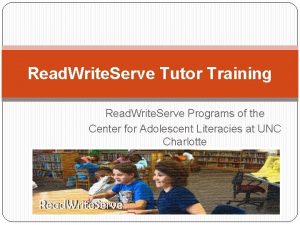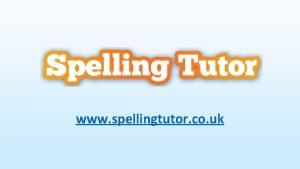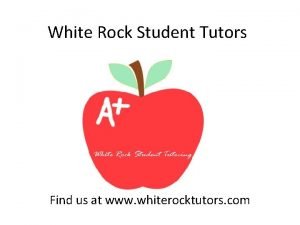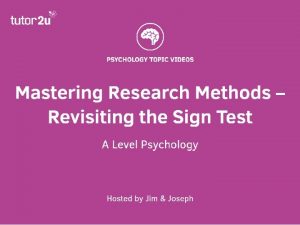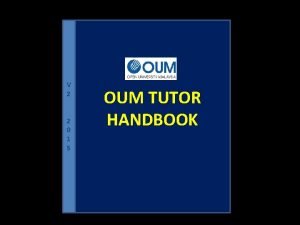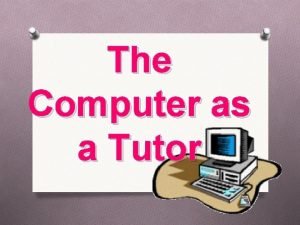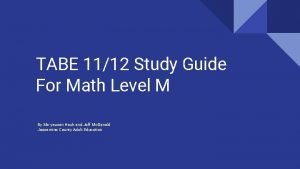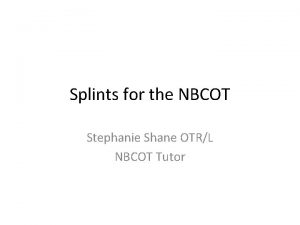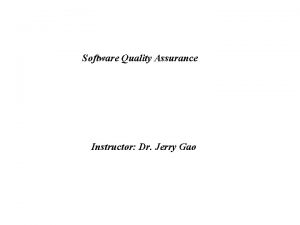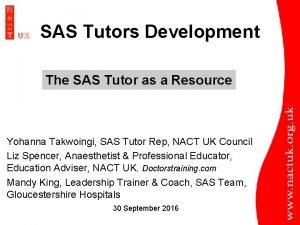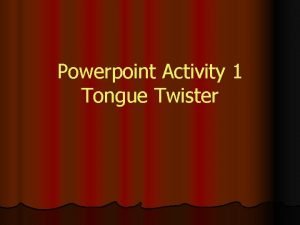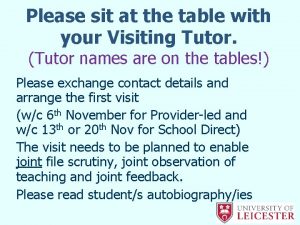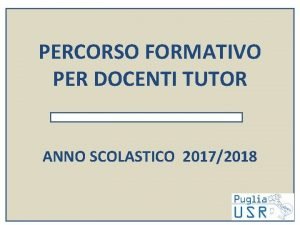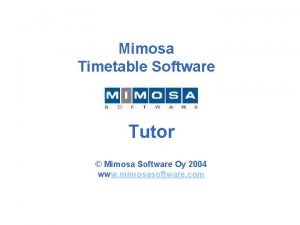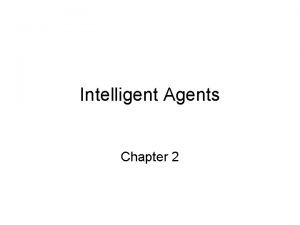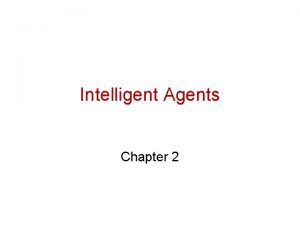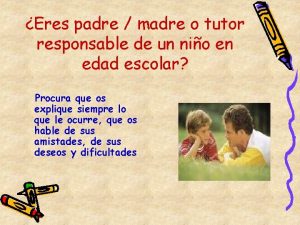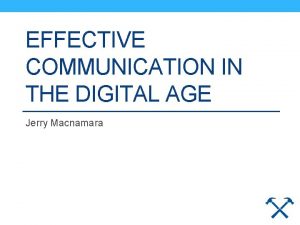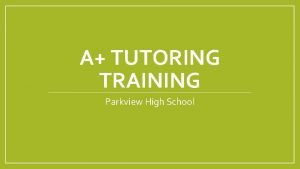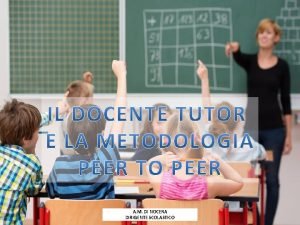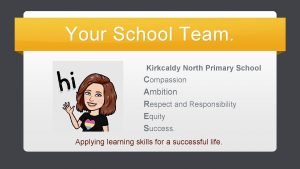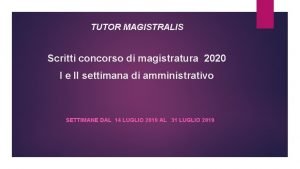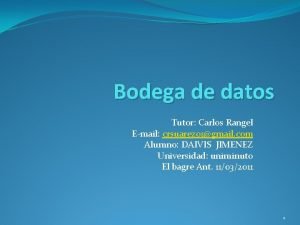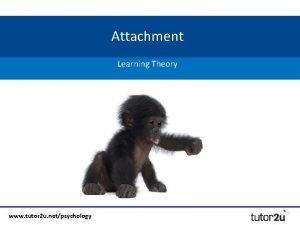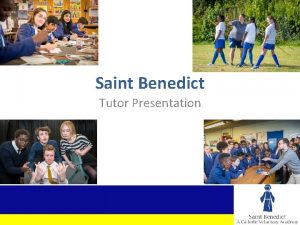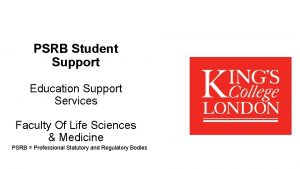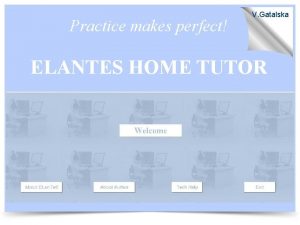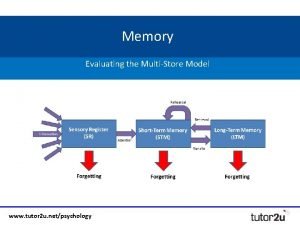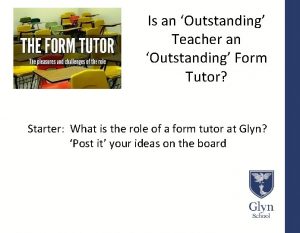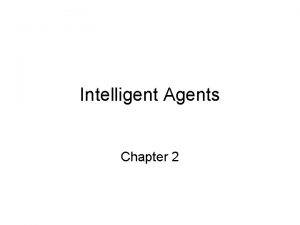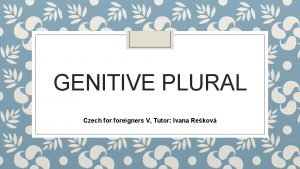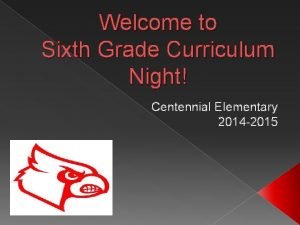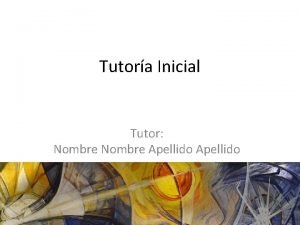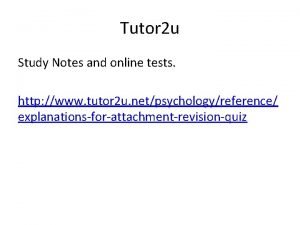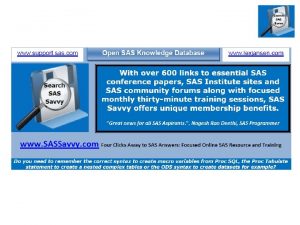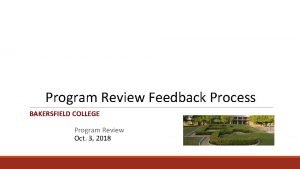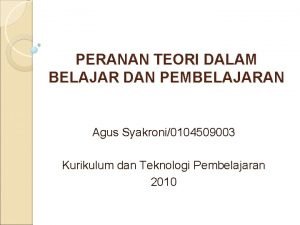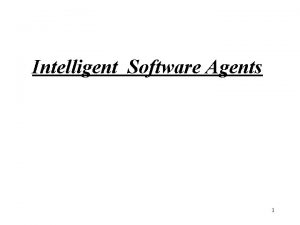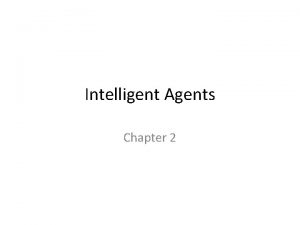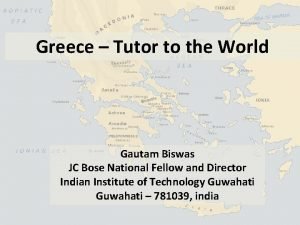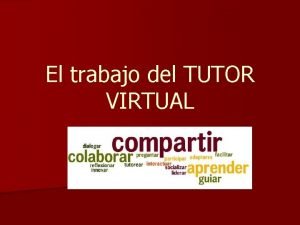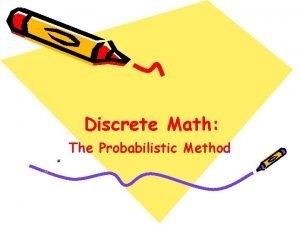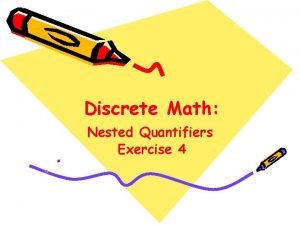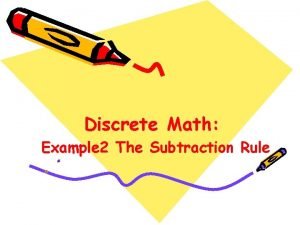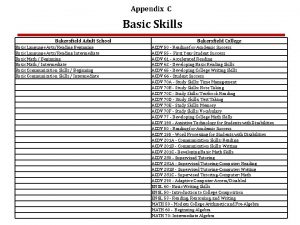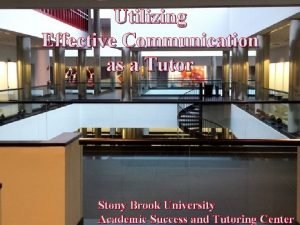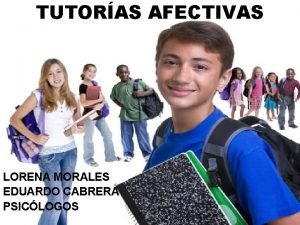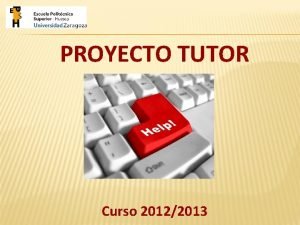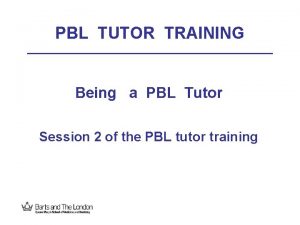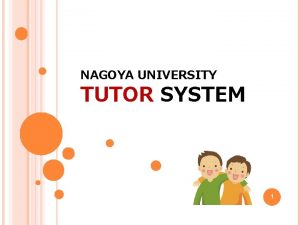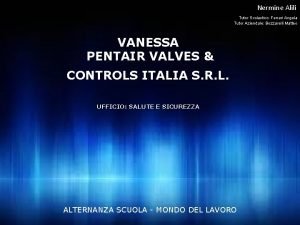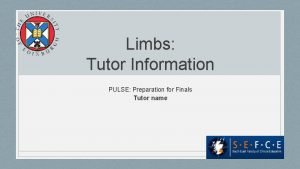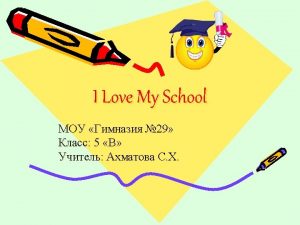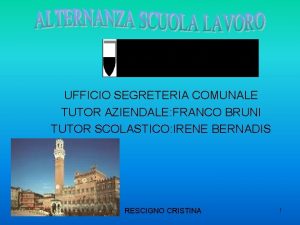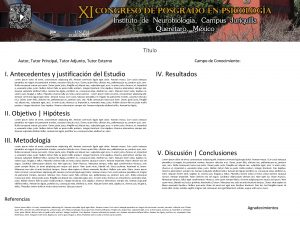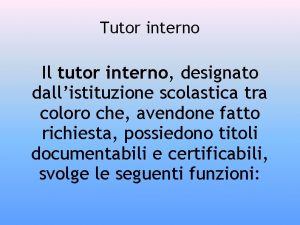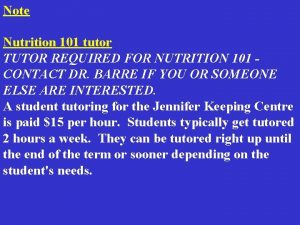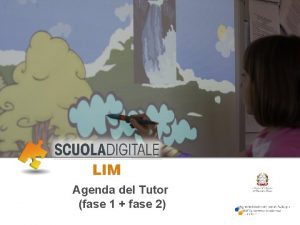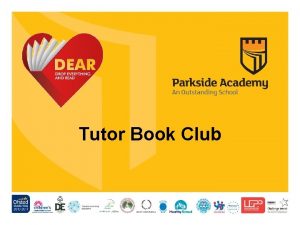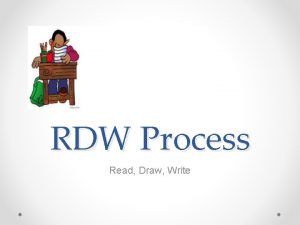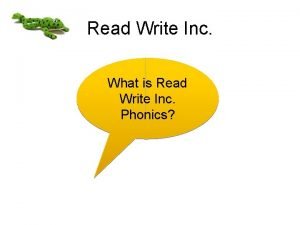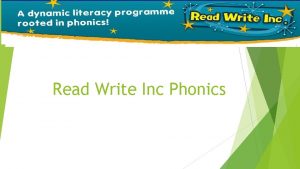Read Write Serve Tutor Training Read Write Serve



































































- Slides: 67

Read. Write. Serve Tutor Training Read. Write. Serve Programs of the Center for Adolescent Literacies at UNC Charlotte

What is Read. Write. Serve? �Read. Write. Serve--Partnership for Literacy Action Initiatives brings together UNC Charlotte and community-based resources to address increasingly complex literacy needs of students and their families in the Southeastern U. S. through service, research and community-based programs that are culturally relevant and focused on community needs. �RWS supports literacy and reading tutors working with students at different levels and in differing contexts. �We offer a structured but flexible approach to tutoring that relies on tutors to make decisions p. 2 about the needs of learners.

RWS Tutors Provide �Homework Help �Reading Support �Mentoring A note about our terminology: Tutors-----UNC Charlotte student /staff volunteers Learners----the grades K-12 students receiving tutoring

The RWS Commitment �Set a time commitment that is reasonable and stick with it. We ask that you commit to meeting with a learner once a week if possible. Whatever your schedule, please keep your commitment to our student partners. �Be ethical and responsible in all that you do in your work with p. 2 student partners. You are mentors and role models.

Have questions? Need help? �Check out the Read. Write. Serve Tutor Blog at rwstutoring. wordpress. c om �Get tutoring tips �Learn about upcoming events and trainings �Ask questions & join a conversation

Before we get started… 3 2 1 Three things you want to learn today Two things you want us to know about you One thing you believe about reading

Jumping Right In Do’s & Don’ts of Tutoring

Scenario #1: What’s a Tutor to Do? You begin tutoring with a book. What do you do?

Scenario #1: What’s a Tutor to Do?

Scenario #1: What’s a Tutor to Do?

Scenario #1: What’s a Tutor to Do? �You’ve just begin working with Alex, a 2 nd grade student who struggles a bit with reading. You sit down with Alex and open up Flat Stanley at Bat, an I Can Read Level 2 book. �What do you say? What do you NOT say? �What do you do? What do you NOT do? �How do get started in tutoring Alex?

DO’S: Tutoring Tips �Let the child hold the book and turn the pages �Let the child set the pace �Take time to look and talk—look at the pictures and talk about the book �Listen, listen �Talk about their ideas and check your predictions from the picture walk �“What did you like? ” �Talk about other good books and reading

Get to know each other Ice breaker & information

• Assessment • Overview of Tutoring • Meeting the Learner • Setting Expectations • Evaluating the Learner • Planning Tutoring Sessions p. 5

Formal vs. Informal Assessment INFORMAL ASSESSMENT Observations of the learner Standardized tests (End-of Interviews or conversation Grade and End-of-Course with the learner (what the tests) learner says he or she Ability tests (IQ) wants and needs) Teacher created tests and Listening to a learner read quizzes or work a problem Learner think-aloud with class work, homework, a book Input from teachers and parents p. 9 Student retellings of a text 10

Informal Assessment gives us information about what learners strengths and areas of need—what they can do and what they need help with. Here are some informal methods of assessment: �Interview �Learner Surveys � 5 -finger assessment �Read Alouds �Retellings p. 10

Our Approach: Guided Learning Our basic approach is to meet a learner at his or her point of need. You might help the learner with homework or in reading and writing. Most tutoring can be broken into this sim ple framework: �Before Reading & Learning �During Reading & Learning �After Reading & Learning p. 14

Guided Reading & Learning is a type of instruction in which a tutor guides at student (learner) through the process of reading. Tutors are mentors to students. They help students (learners) move from reading with help to reading independently.

Instructional Sequence Rationale To establish purpose, activate background knowledge, motivate & engage learner. Pre-reading activities Pre-reading & Before Reading & Learning Previewing a book: Book Walk or Picture Learning Talk KWL Talk about the subject or text Scaffold reading and learning. Make learning active. During-reading activities Reader-Text Shared reading: Choral or Part Reading During Reading & Learning Interactions Reread for fluency Say Something Think Pair Share Double Entry Journal To extend and elaborate ideas from the text p. Post-reading activities 14 Retellings and discussion Post reading & After Reading & Learning Journaling Learning Concept Maps

Example 1: Sam in 7 th Grade Instructional Sequence Activities Comments/Notes Before Reading & Learning Preview book— Pre-view Social Studies homework book walk (worksheet) and pre-read textbook with Sam. Point out headings, subheads, and key words. To establish purpose, KWL activate background Talk about text or knowledge, motivate & subject engage learner. During Reading & Learning. Shared reading: Use Say Something strategy while reading Choral or parts text to help Sam verbalize what he is reading. Guided reading and Reread for fluency Post ideas on sticky notes to help answer questions. learning. Make learning Use Strategies active. --Think. Pair. Share --DE Journal, etc Guide Sam in answering questions on After Reading & Learning Retellings & discussion worksheet. Check to see if he is using headings/subheads and notes to help answer To extend and elaborate Journaling, concept maps questions. ideas from the text p. Mini Lessons 18

Example 2: Rachel in 3 rd Grade Instructional Sequence Activities Comments/Notes Before Reading & Learning Preview book— Introduce new books and Do a picture walk book walk of the book that Rachel chooses to read. Have her make predictions. Point out a few words. To establish purpose, KWL New books: activate background Talk about text or Three Questions, Lion and the Mouse, Strega knowledge, motivate & subject Nona engage learner. During Reading & Learning. Shared reading: Guide reading. Ask recall questions and check Choral or parts for comprehension (“Does that make sense? ”). Guided reading and Reread for fluency Reread sections as needed to build fluency. Find 4 to 5 words to teach learning. Make learning Use Strategies active. --Think. Pair. Share --DE Journal, etc Ask: “Tell me about what you just read? ” After Reading & Learning Retellings & discussion Teach the new words and review sight words. To extend and elaborate Journaling, concept maps p. ideas from the text Mini Lessons 19

Scenario #2: Planning for Sam Instructional Sequence Activities Before Reading & Learning Preview book— book walk To establish purpose, KWL activate background Talk about text or knowledge, motivate & subject engage learner. During Reading & Learning. Shared reading: Choral or parts Guided reading and Reread for fluency learning. Make learning Use Strategies active. --Think. Pair. Share --DE Journal, etc After Reading & Learning Retellings & discussion To extend and elaborate Journaling, concept maps ideas from the text Mini Lessons Comments/Notes

Scenario #2: Planning for Sam �You’ve been working with Sam, a 5 th grade student who loves science but struggles a bit with reading. Sam has difficulty remembering what he reads and finds new words challenging. �Plan a lesson for Sam using Fossils as your book. It’s one he’s picked out and seems like it’s not too difficult.

Scenario #2: Planning for Sam

Scenario #2: Planning for Sam

Scenario #2: Planning for Sam Instructional Sequence Activities Before Reading & Learning Preview book— book walk To establish purpose, KWL activate background Talk about text or knowledge, motivate & subject engage learner. During Reading & Learning. Shared reading: Choral or parts Guided reading and Reread for fluency learning. Make learning Use Strategies active. --Think. Pair. Share --DE Journal, etc After Reading & Learning Retellings & discussion To extend and elaborate Journaling, concept maps ideas from the text Mini Lessons Comments/Notes

Lesson Activities & Mini-lessons Here are some useful lesson activities and minilesson ideas: �Book Walk or Picture Talks �Guided Reading & Learning �Dictating Stories or LEA �Word Families & Word Sorts �Sight Word practice �Teaching Strategies p. 17

Book Walks & Picture Talks �Tutors guide students through a book by looking at the cover, title page, and pictures in the book. Point out a few key words and ask the learner questions like, “What do you think is going on in the book? ” and “What do you think will happen? ” During the guided reading and learning session (the heart of the tutoring process), the tutor can check with the learner to confirm predictions. p. 17

Basics of the Book Walk, Picture Talk �Start with the cover. �Look at the picture �Read the title and author �Ask, “what do you think this book is about? ” �Take a picture walk. �Without reading the words ask the child to turn the pages one at a time. �Point to the pictures and ask, “What do you think is happening? ” �Use the 5 “W” and “H” questions

Basics of the Book Walk, Picture Talk �Take a picture walk. �Use the 5 “W” and “H” questions �What is happening on this page? �Where do you think they are going? �How do you think it will end? �Will they get to the house? �Repeat what the child said but in your own words �Add a bit more information

If time allows…try a book walk �If you have a book available, do a quick book walk or picture talk with a partner. �Talk about pictures �Make predictions �Point out the title and a few words you think are important to the story

• Picking Texts to Read • Comprehension • Word Work: Vocabulary & Sight Words • Fluency • Decoding p. 21

Picking Texts to Read p. 22 You can use any type of text to tutor from; however, if you get a chance to read for enjoyment, pick a good book (one that your student picks) that is not too difficult and enjoy reading for pleasure. Together with the student, you can choose reading material that interests the student and is at an appropriate reading level. One method for choosing a book is the five finger method. Remember � Whenever possible, pick books that are interesting to the learner � For tutoring, pick books are that at their Instructional Level (not too easy, not too hard) � For independent (personal) reading, pick books at the Independent Level.

Picking books at the right level “Just right” book but when time is short use these strategies for finding a book that isn’t too challenging: �Ballpark it! Working with a struggling 3 rd grader? Pick a book that looks like a 1 st or 2 nd grader could read it. �Don’t worry. Just read it! Don’t worry if it is a “just right” book. Read aloud and talk with the child. �Five Finger Rule. A quick and simple way to match a book to a kid.

Five Finger Rule �As you or the child reads a page from a book, have them put a finger on any words they don't understand. The number of fingers used helps indicate the reading level. � 0 -1 fingers - too easy (Independent level) � 2 -3 fingers - just right (Instructional level) � 4 -5 fingers - too hard (Frustration level) �Too easy is okay. Too hard isn’t. Remember that this is just a “quick & dirty” test. p. 13

Scenario #3: Struggling Reader http: //youtu. be/df. Sog. VWYvbo

Scenario #3: Struggling Reader �What do you see as this child’s reading challenges? �What can we do in our tutoring to help her?

What to focus on in tutoring There are four key areas that we most often focus on in literacy tutoring. �Comprehension �Word Work: Vocabulary & Sight Words �Fluency �Decoding

Comprehension �Comprehension is the “so what” of reading. Readers who comprehend understand can answer questions about what they’ve read. Here are some strategies that help with comprehension: �Say Something �Double-entry Journal �Think. Pair. Share �KWL � 3 -2 -1 �Talking Drawings p. 22

Comprehension Strategies Say Something Double-entry Journal Take turns reading and… �Make a prediction �Ask a question �Clarify something you read �Make a comment �Make a connection Thoughts about the text before I read Thoughts after I read p. 23 -24

Comprehension Strategies KWL Chart Think. Pair. Share �By yourself, think What I KNOW about _________ _ �Share your thoughts with a partner or tutor �Write down some new things you learned Works great with math WANT to What I know LEARNE D p. 25

If time allows… �Take a couple minutes and review pages 23 through 27 in your RWS Tutor Handbook. �Think about the comprehension strategies and how you might use them. �Look back at the lesson plan you created (if we had time) and think about strategies you might add. �What strategies could you have used in tutoring in the past? Which strategies do you think you’d use in the future.

Word Work �Sight words are the most common words that make up our spoken and written language. Fifty percent of all text is made up of the most common 100 sight words. �Vocabulary refers to the meanings of words, not their spelling or pronunciation. Vocabulary is important to a reader’s success because comprehension breaks down when readers encounter too many words they do not know. Vocabulary words are new words that students must learn. p. 28

Sight Words �Sight words are common words that a reader should recognize on "sight. " These important words are also referred to as "high-frequency words. ” �Sight words are a group of common words with a high-frequency of use that readers must know on sight, instantly, and automatically in order to develop into an efficient and smooth reader. Some examples of these important words are a, is, the, of, and, that, in, you, I, and to. �We include a copy of the list of Dolch Sight Words p. in the back of this handbook on page 55. 28

Vocabulary strategies help readers with words they don’t know and need to learn. We don’t expect them to have to memorize these words like we hope readers will do with sight words. Readers need strategies to include but go beyond teaching definitions and include pictures and connections to the real world. Do’s Don’ts Teach words that matter Teach words just because a learner doesn’t know it Teach a few words at a time Teach 10, 15, 20 words (lists) at a time Teach words that the student will see and use again Teach words that you are unsure of p. 28

Sight Words & Vocabulary Repetition is the key to teaching sight words. Try this: �Play Sight Word bingo �Make sight word flash cards and review them each Here are some strategies that help teach vocabulary. Note that they move beyond simply teaching definitions. �Vocabulary Cards �Vocabulary Self-Awareness Chart �How Well Do I Know These Words �Teach common pre-fixes and root words

Vocab Cards & How Well Do I Know p. 30

Vocabulary Self-Awareness Chart p. 31

If time allows… �Take two minutes and review pages 28 through 32 in your RWS Tutor Handbook. �Think about the vocabulary strategies and how you might use them. �Try your hand at creating a vocabulary card for a content area term like solar or cylinder.

Fluency �Fluency is the ability to read accurately, effortlessly, at the appropriate pace, and with expression. Because fluent readers do not have to concentrate on figuring out the words, they can focus their attention on what the text means. In other words, fluent readers recognize words and comprehend at the same time. �Less fluent readers, however, must focus their attention on figuring out the words, leaving them little attention for understanding the text. p. 30

Fluency Strategies Here are some strategies to help with fluency: �Rereading. This is one of the best ways to help improve fluency. �Echo Reading. Echo reading is a rereading strategy designed to help students develop expressive, fluent reading. In echo reading, the tutor reads a short segment of text (sentence or phrase), and the student echoes back the same sentence or phrase while following along in the text. �Paying Attention to Punctuation. Some students read through periods. Point out end punctuation, model reading it, and have the learner reread.

Phonics & Decoding �Phonics has to do with looking at the letters of a word, figuring out what sounds those letters make, and putting the sounds together to read the word. During phonics instruction we teach children the letter or letters that make each sound. Phonics instruction can also focus on patterns, such as the –ight pattern and all of the words that you can make from that pattern (flight, knight, light, might, night, plight, right, sight, and tight). Spelling is similar to phonics except that instead of reading, you are writing. p. 34

Decoding English has many irregular words. Consider these two: Ate and Eight However there are many word patterns you can teach. Here a few: �Spelling Rules. Late: the /e/ makes the /a/ say it’s name �Word Families. –ight words, -ate words (late, fate, crate), -ad words (mad, bad, had) Note: Don’t spend too much time on decoding. Be sure to help with comprehension, vocabulary and

Decoding/Phonics Strategies Word Family Sorts Sticky-note Word Family Books p. 34 -35

Tutoring Scenario You’ve just begun tutoring a new learner, Jose, a fifth-grader. You observe the following: ◦ Jose reads the words on the page well but as he says, “I just don’t get it. ” You ask Jose to read aloud and his reading sounds fine but when you ask him to do a retelling he has little to say. ◦ He also says that some of the words in his science book are difficult. What can you do?

Reading with Learners p. 36 There are many ways to organize reading—read aloud, partner reading, silent reading. Here are some different ways to organize reading when you work with a student: � Read Aloud (oral reading). Have the student read aloud to you. � Buddy Reading. You and the student take turns reading sections of a text and talking about it. Great questions include: “What do you think will happen next? ” or “Does that make sense? ” � Choral Reading. Another good strategy for struggling readers is to read a text aloud together in unison. � Silent Reading. Yes, this works in tutoring as well— Not all reading has to be out loud. Read aloud is especially for older students. You and the student read a text to an agreed upon stopping point and then useful but can be uncomfortable for some learners. discuss the passage.

• Getting to Know the Learner • Setting Expectations • Evaluating the Learner • Our Approach (Planning) p. 5

Getting to Know the Learner At the first meeting or two, the tutor and learner need to get to know one another. This initial session is an important step towards building a positive rapport that will underlie the tutoring and learning experience. Use this first meeting to: �Establish rapport �Setting expectations �Get to know your learner p. 6

Ice Breakers are games or activities we use to get to know a learner or “break the ice. ” Here a few of these activities: �Acrostic Name Poem �The Memory Game �Two facts and a lie p. 5 -7

Acrostic Name Poem NAME C H R I S About me… Curious and loves to learn Happy and has lots of friends Really loves science Interested in music and wants to play guitar Sports fanatic p. 7

Setting Expectations It’s important to establish expectations between the tutor and learner. You can do this through discussion or if you prefer, you can use the Literacy PALS Tutor-Learner Agreement that is in the back of your Literacy PALS Handbook. The main points are that both Tutor and Learner agree to: �Come prepared to all tutoring sessions �Arrive on time �Listen and talk with each other �Be respectful of each other

More than the sum of its parts The Kingdom Of Kay Oss Once in the land of Serenity there ruled a king called Kay Oss. He wanted to be liked by all his people. So onx day thx bxnxvolxnt dxspot dxcidxd that no onx in thex country would bx rxsponsiblx for anything. Zll of thx workerxrs rxstxd from thxir dzily lxbors. "Blxss Kzy Oss, " thxy xxclzimxd. Now, thx lzw mzkxrs wxrx vxry wvsx. But zs wvsx zs wthxy wxrx, thxy dxcvdxd thzt thx bxst form of govxernmxnt wzs nonx zt zll. Zs tvmx wxnt qo, thx kvngdqm og Kzy qss bxgzn tq splvt zt thx sxzms znd vt lqqkxd lvkx thvs: Bex dqufghj klzm nqxp

• A word about mentoring p. 4041

A word on mentoring Mentors are guides. They lead us along the journey of our lives. We trust them because they have been there before. They embody our hopes, cast light on the way ahead, interpret arcane signs, warn us of lurking dangers, and point out unexpected delights along the way. � Student mentoring is defined as a one-to-one relationship between a youth and an adult that occurs over a prolonged period of time. � The mentor provides consistent support, guidance, and concrete help to a student who is in need of a positive role model. � Students involved in the mentoring program may be going through a difficult and/or challenging situation, a period of life in which they need extra support, or they may simply need to have another significant adult present in their life. � The goal of student mentoring is to help students involved in the mentoring program to gain the skills and confidence to be responsible for their own futures p. 40

• Web based resources like our websites and blogs • Who to contact for help p. 4255

Resources for Tutors The Center for Adolescent Literacies offers the following resources: RWS Tutoring website https: //tutoring. uncc. edu/ RWS Tutoring blog http: //rwstutoring. wordpress. com/ Center for Adolescent Literacies website http: //literacy. uncc. edu/

Need help? Have questions? Read. Write. Serve Programs are a part of the Center for Adolescent Literacies at UNC Charlotte. If you have questions or need our help, call or email us: Dr. Bruce Taylor 704 -701 -5235 bruce. taylor@uncc. edu Jean Vintinner 704 -687 -7991 jvintin@uncc. edu
 Read write serve
Read write serve Offer vs serve training
Offer vs serve training English spelling tutor
English spelling tutor Kumon white rock
Kumon white rock Tutor 2 you
Tutor 2 you Gaji tutor oum
Gaji tutor oum Computer as a tutor
Computer as a tutor Tabe tutor math level m
Tabe tutor math level m Dr stephanie shane
Dr stephanie shane Splunk ftr
Splunk ftr Sas online tutor
Sas online tutor 4 stages of recruitment process gcse
4 stages of recruitment process gcse A tutor who tooted the flute tongue twister
A tutor who tooted the flute tongue twister Visiting tutor
Visiting tutor Registro peer to peer compilato
Registro peer to peer compilato Tutor timetable software
Tutor timetable software What is peas in artificial intelligence
What is peas in artificial intelligence Interactive english tutor peas
Interactive english tutor peas Peas for interactive english tutor
Peas for interactive english tutor Tutor responsable
Tutor responsable Site:slidetodoc.com
Site:slidetodoc.com Tutor parkview
Tutor parkview Esempi di peer to peer compilati
Esempi di peer to peer compilati Tutor hub
Tutor hub North primary school kirkcaldy
North primary school kirkcaldy Tutor magistralis
Tutor magistralis Datos tutor
Datos tutor Tutor 2 u
Tutor 2 u Peas for part picking robot
Peas for part picking robot Ucl computer science department
Ucl computer science department Tutor tongue twister
Tutor tongue twister Tutor time uniform
Tutor time uniform Personal tutor dashboard kcl
Personal tutor dashboard kcl Elantes
Elantes Clive wearing psychology tutor2u
Clive wearing psychology tutor2u Medea tutor
Medea tutor Form tutor report comments
Form tutor report comments Agent a chapter 2
Agent a chapter 2 Tutor plural
Tutor plural P= f/a
P= f/a Pharmacology tutor anderson
Pharmacology tutor anderson Tutor arbitro
Tutor arbitro 6th grade tutor centennial
6th grade tutor centennial Nombre del tutor
Nombre del tutor Tutor 2 u
Tutor 2 u Elektroniktutor
Elektroniktutor Tcl tutor
Tcl tutor C tutor
C tutor Sas tutors
Sas tutors The uni tutor
The uni tutor Spss tutor bakersfield
Spss tutor bakersfield Teori teori belajar
Teori teori belajar Dreamweaver tutor
Dreamweaver tutor Intelligent software agent
Intelligent software agent Peas description for interactive english tutor
Peas description for interactive english tutor Table driven agent
Table driven agent Ancient greek tutor
Ancient greek tutor Trabajo de tutor virtual
Trabajo de tutor virtual Discrete math tutor
Discrete math tutor Discrete math tutor
Discrete math tutor Discrete math tutor
Discrete math tutor Sas tutor
Sas tutor Spss tutor bakersfield
Spss tutor bakersfield Omniscient agent
Omniscient agent Use of would rather
Use of would rather Perceptual barriers
Perceptual barriers Bridgeport university computer science
Bridgeport university computer science Tutor afectivo
Tutor afectivo
